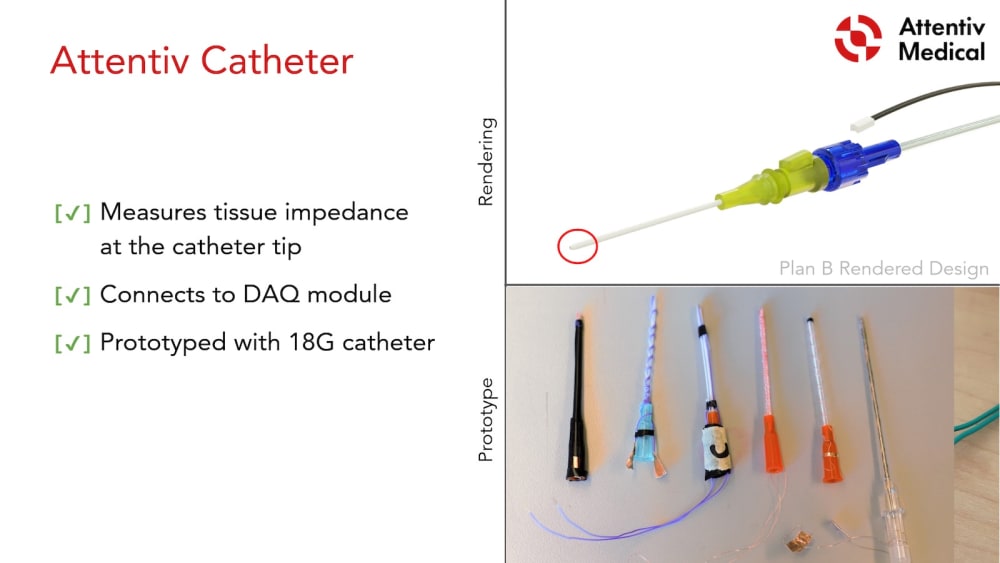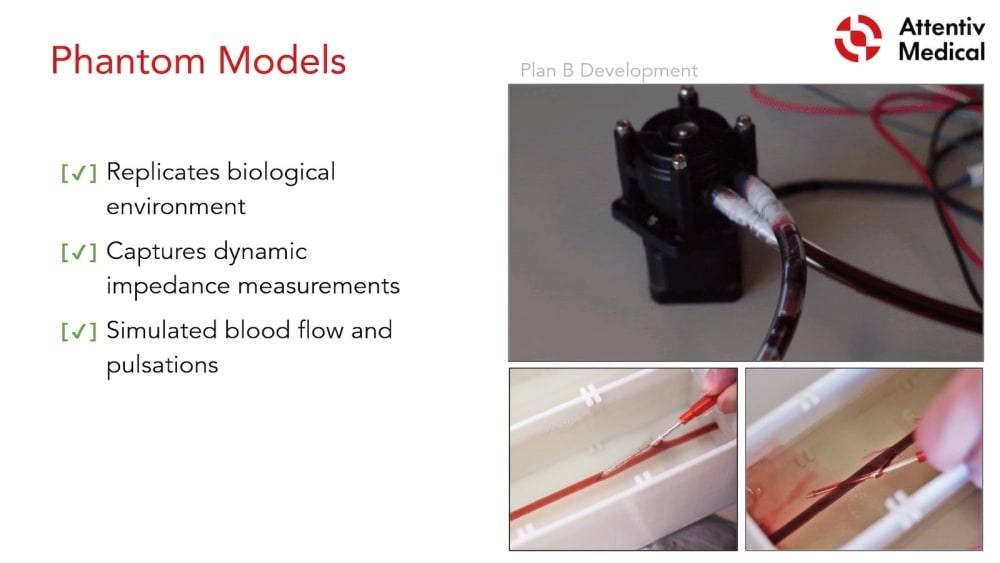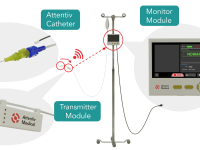
The problem of IV infiltration is a widespread, unaddressed issue in the healthcare system. The use of IV treatment encompasses 70-90% of patient visits to hospitals [1], which lead to significant healthcare costs. Catheter dislodgement, the leading cause of IV infiltration, remains common. 68% of clinicians report catheter dislodgement “often, daily, or multiple times daily occurrence”, representing an estimated 7.5 million number of incidents in the US [2]. While these problems are treated as unavoidable, the stigma itself prevents significant progress in finding a better solution.
The Attentiv Catheter is a world-first monitoring solution for IV infiltration that utilizes root cause detection to seamlessly integrate and alert caretaker staff of intravenous delivery complications. Comprising a disposable sensor-embedded catheter, a reusable impedance analyzer transmitter module, and a centralized monitor module, our device removes risk and liability for overworked nurses in tracking IV infiltration.
Our device will enable accurate and early detection of IV infiltration through monitoring catheter dislodgement, reduce the workload of the patients’ caretakers by creating a reliable and intuitive alert system, and improve patient safety and outcomes through reliable detection. The Attentiv Catheter utilizes embedded sensors sensitive to tissue property changes at catheter tip, a unique algorithm for signal processing and reliable classification of IV infiltration events, and a monitoring system for caretakers that incorporates portable notification tools for active monitoring.
Key advances in sensor miniaturization and machine learning signal processing are enabling technologies which allow fast and accurate detection. Our device establishes a competitive advantage compared to the sparse competition in this problem area through key deficiencies in current methodologies. Our device better integrates with existing nurse workflow as a hardware replacement as opposed to an add-on, monitors root cause of IV infiltration, and exhibits scalable implementation in healthcare spaces.
IV infiltration negatively affects our three main stakeholders: patients, hospitals, and nurses. Infiltration affects up to 70% of NICU babies [3] and 23% of adult patients [1]. Around 4-6% of these cases result in serious injuries that require surgical treatment, extended hospital stays, and long-term rehabilitation. If left untreated, the infiltrated IV fluid causes blisters, skin burns, and in worse cases, necrosis (tissue death) that requires amputation. A third of babies also receive arterial catheterization with the same catheters used in IV infusions, and 4-5% of those patients experience ischemia (lack of oxygenation) due to catheter dislodgement and stay at the hospital an average of 50+ more days.
[1] Helm, R. E., Klausner, J. D., Klemperer, J. D., Flint, L. M., & Huang, E. (2015). Accepted but Unacceptable. Journal of Infusion Nursing, 38(3), 189–203.
[2] Moureau, N. (2018). Impact and Safety Associated with Accidental Dislodgement of Vascular Access Devices: A Survey of Professions, Settings, and Devices. Journal of the Association for Vascular Access, 23(4), 203–215. doi: 10.1016/j.java.2018.07.002
[3] McCullen, K., Pieper, B. A Retrospective Chart Review of Risk Factors for Extravasation Among Neonates Receiving Peripheral Intravascular Fluids. Journal of Wound, Ostomy and Continence Nursing: March-April 2006 - Volume 33 - Issue 2 - p 133–139
Video
-
Awards
-
 2020 Top 100 Entries
2020 Top 100 Entries
Like this entry?
-
About the Entrant
- Name:Kevin Ta
- Type of entry:teamTeam members:Jessica Bo (B.ASc in Mechanical Engineering - Biomedical),
Kevin Ta (B.ASc in Mechanical Engineering - Mechatronics),
Rio Nishida (B.ASc in Integrated Engineering - Mechanical & Electrical),
Gordon Yeh (B.ASc in Computer Engineering) - Software used for this entry:C, C++, Python
- Patent status:none








